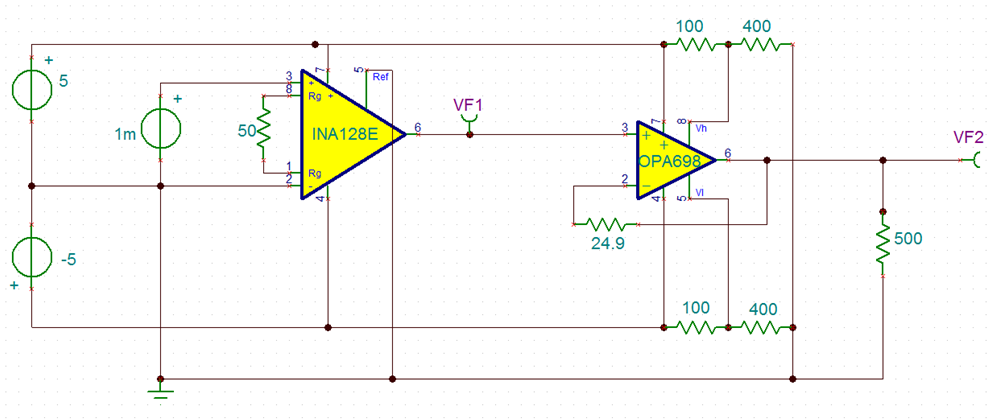Hello,
I have some trouble to use my OPA698 (voltage limiting amplifier) without gain
my actual circuit: An INA128 (in-amp) is connected to an ADS1251 (ADC). To protect my ADC, I want to limit ADC's input voltage between -0.2V and 4.5V.
the circuit I want: I would like to insert my OPA698 between in-amp and ADC. I would like to use my OPA as a unity gain buffer (G=1)
My problem: I measure the output voltage of the in-amp (OPA698 is not connected), it's stable. As soon as I connect my OPA698, the voltage value changes and starts to become instable. A 24.9 Ohm resistor is present between inverting input and output.
I suspect impedance problem, but I don't know how to solve it. More than a circuit I can implement, I'm searching the knowledge to solve this type of problem.
Help will be really appreciated.
Regards,
Julien



